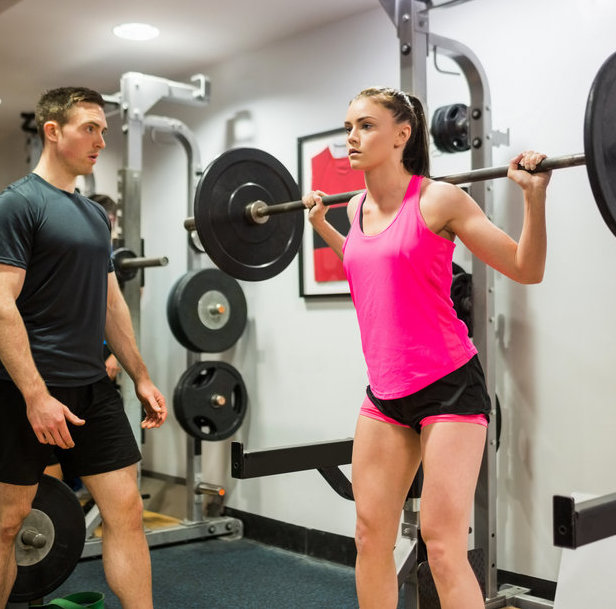Visit
Physiosports Brighton,
429 Nepean Highway, Brighton East,
3187, VIC, Australia
Call
Fax
03 9596 9155
physiosports@physiosports.com.au

Strength or resistance training involves much more than simply going to the gym a couple times a week. As health professionals, it is crucial we understand the scientific rationale and clinical application of exercise prescription in strength training to successfully guide our patients through their rehabilitation.
In fact, resistance training is more about the design of the program than the exercises themselves. Recent evidence highlighting the clinical significance of concepts such as load management and periodization emphasize this point.
In my experience, the idea of strength training can make some patients (and health professionals) apprehensive. However, the risk of aggravating an injury must be balanced with the risk of prolonging a patient’s deconditioned state.
When discussing with a patient their goals following injury, one of the most common statements I hear is “what can I do to prevent this happening again?’.
Thankfully these days my answer is both simple and evidence based – improve your strength.
It would be wonderful if getting stronger was an easy process. Though the exercises or dosages need not be complicated, gaining strength requires some effort. The American College of Sports Medicine suggests exercise intensity of greater than 70% 1 rep max is required to elicit a neuromuscular response. This is one reason why walking won’t elicit the strength gains needed during rehabilitation, nor will exercises that generally feel easy to complete. However, a program that considers the injury and progresses the load appropriately can lead to significant strength gains.
As such, I would encourage all health professionals to consider introducing a suitable resistance training program into their patient’s rehabilitation for these three reasons:
A recent systematic review using data from 1545 rehabilitation patients demonstrated that strength training ‘can be used successfully with several musculoskeletal injuries, in particular those of the chronic varieties’ (Kristensen and Franklin-Miller, 2012). Resistance training improved functional outcomes in chronic low back pain, knee osteoarthritis, chronic tendinopathy and post hip replacement patients (Kristensen and Franklin-Miller, 2012). Other studies have shown that a structured resistance training program can reduce pain and improve function in other musculoskeletal presentations such as neck pain (Gross, 2015), groin pain (Jensen, 2012), shoulder pain (Andersen, 2014) and also osteoporosis (Gomez-Cabello, 2012). So not many patients who wouldn’t benefit from more reps.
A recent systematic review using data from over 26000 patients showed that ‘strength training reduced sports injuries to less than a third’ and suggested that strength training may also halve overuse injuries (Lauersen et al, 2014). Not a bad justification to add a structure resistance training program into your patient’s management.
When I started using strength training as a treatment tool, I had to consider what would help patient compliance. Some patients where already members of a gym and had access to a wide range of machines and weights. However, most did not, nor were they initially likely to invest in a gym membership. Thankfully resistance training doesn’t need to involve large weights, squat racks, benches or sweaty mats in a gym with blaring music. The benefit we have as health professionals in the delivery of resistance training is that our clients are generally starting from a low base. Therefore, in order to provide the appropriate dosage to elicit the physiological response, body weight is ideal in many cases. Further resistance, can be added with a resistance and power bands. Not only are they easy to store and transport, they are incredible versatile and quite affordable. In my experience, only bodyweight exercises with a few bands for added resistance is perfect for the first 1-4 weeks of many rehabilitation based strength training program. Keeping things simple makes it easier for clients to continue at home independently (before getting them into the gym). In summary, resistance training is:
Andersen, C. H., Andersen, L. L., Zebis, M. K., & Sjøgaard, G. (2014). Effect of scapular function training on chronic pain in the neck/shoulder region: a randomized controlled trial. Journal of occupational rehabilitation, 24(2), 316-324.
Gomez-Cabello, A., Ara, I., González-Agüero, A., Casajus, J. A., & Vicente-Rodriguez, G. (2012). Effects of training on bone mass in older adults. Sports Medicine, 42(4), 301-325.
Gross, A., Kay, T. M., Paquin, J. P., Blanchette, S., Lalonde, P., Christie, T., … & Goldsmith, C. H. (2015). Exercises for mechanical neck disorders. The Cochrane Library.
Jensen, J., Hölmich, P., Bandholm, T., Zebis, M. K., Andersen, L. L., & Thorborg, K. (2014). Eccentric strengthening effect of hip-adductor training with elastic bands in soccer players: a randomised controlled trial. Br J Sports Med, 48(4), 332-338.
Kristensen, J., & Franklyn-Miller, A. (2012). Resistance training in musculoskeletal rehabilitation: a systematic review. Br J Sports Med, 46(10), 719-726.
Lauersen, J. B., Bertelsen, D. M., & Andersen, L. B. (2014). The effectiveness of exercise interventions to prevent sports injuries: a systematic review and meta-analysis of randomised controlled trials. Br J Sports Med, 48(11), 871-877.
John is running a Strength and Conditioning Essentials course this November 2018. For more information, click here or email courses@physiosports.com.au.